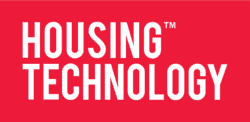This article is based on the presentation I recently gave at the Housing Technology 2019 conference; coincidentally, it was exactly five years ago at the same event that I first began talking about the internet of things in social housing.
Whenever I have met social housing and IT professionals, they have reflected that placing sensors into properties can provide interesting and useful data to their organisations not only on how their assets are performing, but also on how people interact with the properties they are occupying.
Pilot projects only
Scouring articles online, there are always a small number of IoT pilots happening in our sector, but so far no one seems to have moved past a pilot stage and into a large-scale deployment. Why is that? About a year ago, I set out to look at this issue and create a realistic IoT proposition for our sector. This led me to speak at this year’s Housing Technology conference to put my findings to the audience.
I recently joined a technology company called Gas Tag where the environment is one of innovation, so IoT was a potential growth area and one that supported our mission of ‘safety through technology’. Almost immediately after joining, I was put in touch with a contact at Vodafone UK and a meeting was arranged to discuss what I was researching.
Narrow band IoT
The first question I was asked at this meeting was, “Have you heard of narrow band IoT (NBIoT)?” My answer was a simple, “No”. It was this opening, and the subsequent conversations, meetings and demonstrations from Vodafone that allowed me to understand why IoT has potentially not broken out of the many pilots that have been done.
While IoT is seen by many people as a useful application of sensor-based technology and data analysis, there has been a bewildering array of technologies that have been proposed to deliver on the IoT dream; should we look at 2G, 3G, sim cards, LoRA networks, Sigfox or (of course) wi-fi?
Shared network vs. self-managed
When presented with all of these different means of connecting sensors, it’s no wonder that housing providers are hesitant to commit resources to a large-scale implementation. Without going into detail on each one, these existing network technologies fall roughly into two camps; one we call ‘shared network’, the other ‘self-managed’, with wi-fi standing a bit along, but for the purposes of this article, we’ll put it in the ‘shared network’ camp.
What do I mean by shared network? In the case of IoT, it means that the data transmitted from sensors is actually going out on a network that is used for many other applications, most notably mobile voice communications, therefore there can be transmission or signal degradation issues coupled with hardware technology (especially in the case of wi-fi where hubs are required to manage data transmission) that hasn’t been designed for the purpose these networks were originally intended for. The second camp, that of self-managed networks, sees LoRA and Sigfox as technologies that potentially require the organisation using them to also manage the network they create. These two camps mean a mix of technologies, hardware and potential resourcing issues to manage and maintain them if they want to scale.
Dedicated IoT data transmission
Well, what about narrow band IoT? In the presentation at Housing Technology 2019, I was ably supported by Daniel Winn who leads Vodafone UK’s NBIoT team. Dan succinctly explained what NBIoT is and why it’s a technology that the social housing sector should pay attention to. NBIoT is a network specifically designed around the needs of IoT and backed by a worldwide carrier (Vodafone). It has been designed with sensor hardware in mind and therefore is a low-power, low-latency IoT network. This means very low network and data costs, a 10-year battery life on sensor hardware packages (which means cheaper sensor packages), data transmission that can penetrate through concrete bunkers and, most importantly, the ability for these packages to self-transmit across a licensed spectrum that is dedicated to the transmission of IoT data, so no hubs!
Avoiding supplier lock-in
The audience then heard from Dan that as manufacturers take advantage of the system, more and more different sensors will be made available and will be able to easily fit into any existing NBIoT deployment, giving organisations piece of mind that if they initially invest in one hardware solution for the sensor packages, they will not be locked into that particular manufacturer or supplier. This means that they can add more sensors and devices based on business needs and at a pace to suit them.
We then explained how how Gas Tag is leveraging all the benefits of NBIoT in developing a packaged product specifically for UK social housing. This led to a Q&A session where both the NBIoT network and its uses were explained in more detail. It was very gratifying to see the enthusiasm from audience members who sought out Dan and me to explore in more detail what NBIoT can deliver for social housing; we look forward to continuing these conversations following on from Housing Technology 2019.
First major IoT deployment
But so what? Well, it’s not just all talk; the work Gas Tag has been doing with Vodafone has led us to propose the first large-scale NBIoT deployment in UK social housing and we are currently in negotiations with housing providers to deliver sensor packages to thousands of homes. We hope to cover this in more detail in future editions of Housing Technology.
For the five years that I’ve been talking about IoT in housing, I have always had a slide stating that the world of tomorrow was today. With the pioneering work of Vodafone, the vision of social housing providers and the innovative spirit of Gas Tag, the world of today is informing our tomorrows and at last making IoT a reality in social housing.
Stewart Davison is the business development director at Gas Tag.

